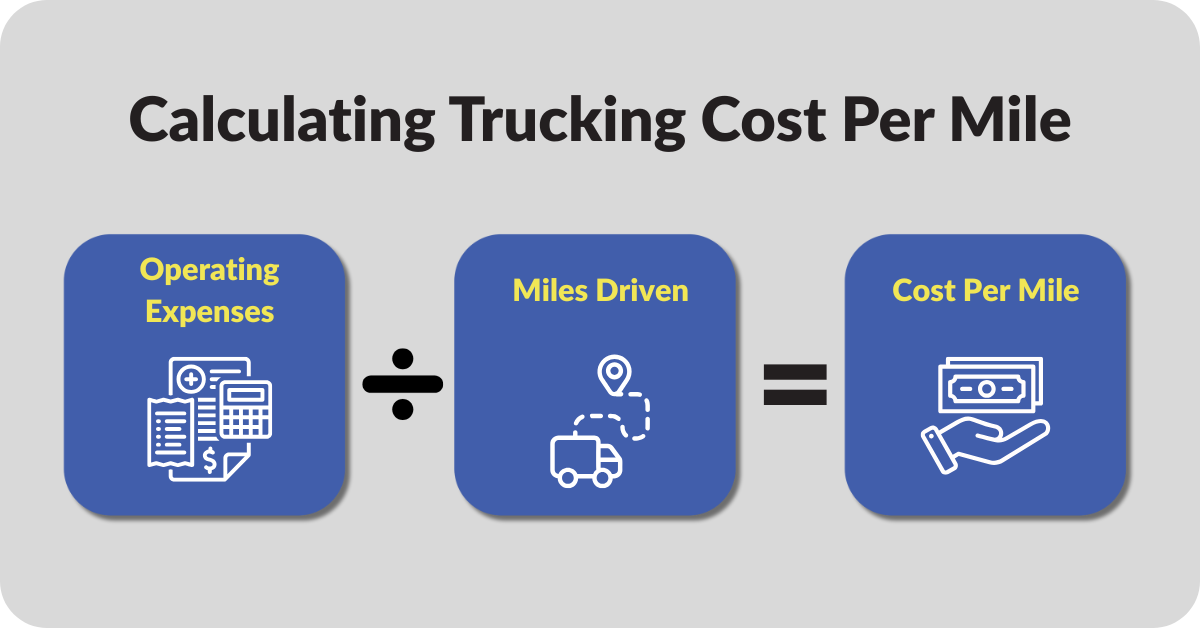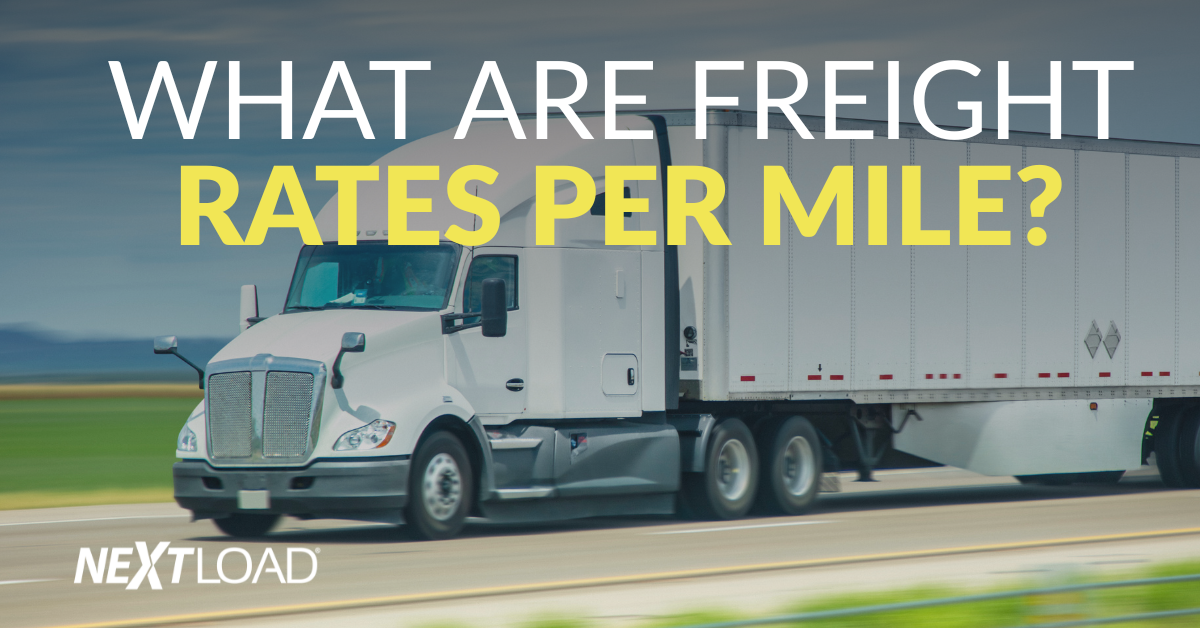If you’re in the trucking industry, you’ve probably wondered how freight rates are calculated and what factors influence them. Getting a clear picture of how rates are determined is key to making smart business decisions and staying competitive. Freight rates and rates per mile (RPM) are the costs associated with moving goods from one place to another, typically calculated per mile. These rates are essential for trucking companies because they directly affect profitability.
In this post, we’ll explore the factors that influence freight rates and how to manage them to keep your business on track
Key Points
- Freight rates depend on things like distance, weight, cargo type, and fuel costs, so businesses need to adjust their pricing.
- The trucking industry is competitive, with rates reflecting market changes. Spot rates change with the market, while contract rates offer more stability.
- Technology is transforming the trucking industry, offering real-time data for better pricing and operational efficiency.
How Freight Rates Work
Rates per mile (RPM) are the charges for moving cargo over a mile. These rates have a big impact on profits and business decisions in the trucking industry. If your rates are too low, you could struggle to cover expenses. If they’re too high, you may lose customers to competitors. Finding that sweet spot is key to maintaining profitability.
Let’s start with some basic trucking terms and how to calculate rates. Accurate calculation of rates and freight costs per mile helps truck drivers and business owners make smart decisions that affect their profits. The average trucking rate can vary based on things like supply and demand, fuel costs, and cargo type. This knowledge prepares you to explore the factors and trends affecting these rates.
Key Terms You Should Know
Rate per Mile (RPM): RPM is how much a trucker earns for each mile driven while transporting freight. It shows the money made per mile and is important for checking if hauling freight is profitable.
Cost per Mile (CPM): CPM shows the expenses a trucker has for each mile driven. This includes costs like fuel, maintenance, insurance, and labor. Knowing CPM helps truckers see how efficient they are and find their breakeven point.
Freight Rate: A freight rate is the charge for moving goods from one place to another, usually calculated per mile. It’s an important part of the trucking industry, affecting the cost and profitability of shipping.
How to Calculate Your Cost Per Mile
Use this formula to calculate your Cost Per Mile (CPM):

CPM = Total Operating Expenses ÷ Miles Driven
This calculation includes all your costs, such as fuel, labor, maintenance, and insurance. Dividing by the miles driven gives you a clear picture of how much you need to charge per mile to cover costs and earn a profit.
What Affects Freight Rates?
If you’ve ever wondered why freight rates can vary so much, you’re not alone. There are several key factors that affect how much you’ll pay to ship goods. Here’s a breakdown of the most important ones:
- Distance and Travel Costs
One of the biggest factors in setting freight rates is how far the shipment has to travel. The longer the trip, the higher the cost. That’s because longer routes mean more fuel, more wear and tear on the truck, and more labor costs. - Weight and Cargo Size
The weight and size of your shipment are huge factors in the cost. Heavier shipments use more fuel, take up more space in the truck, and put more strain on the vehicle, all of which increase the price. Even the size of the cargo matters. If it’s bulky or takes up a lot of space, it could limit how much else can be shipped, which can push the rate up. - Freight Class and Volume
Freight class and volume are important because they help determine how difficult or costly it is to handle your shipment. Larger, bulkier items take up more room and might need special equipment or handling, while certain types of cargo might require more care or be more prone to damage. All of this affects the price. - Cargo Type and Special Equipment
Different types of cargo have different needs, which can impact rates:- Refrigerated Trucks (Reefers): These trucks need special equipment to maintain the right temperature, which adds extra costs.
- Flatbed Freight: Special trailers are required for oversized or heavy loads, and that can raise the price.
- Hazardous Materials: Shipping these kinds of goods often requires extra permits and specialized handling, which comes with a higher cost.
- Industry Trends and Supply & Demand
The trucking industry isn’t immune to broader market conditions. When demand for trucks exceeds supply, rates go up. If there’s more trucking capacity than needed, rates drop. Even global events, like the war in Ukraine, can impact fuel prices, which in turn raises freight rates. - Fuel Costs

Use the TCS Fuel Card to Save on Diesel Fuel Fuel is a major expense in trucking, and as fuel prices rise, so do freight rates. To save money on fuel, companies often use fuel cards and optimize routes to improve efficiency. NextLOAD partners with TCS to offer a discount diesel fuel card that helps businesses save at over 2,000 in-network truck stops, providing a practical way to manage fuel costs and keep rates competitive.
Spot vs. Contract Freight Rates
The difference between spot and contract rates plays a big role in setting competitive prices and maintaining profitability. Spot rates fluctuate with market conditions, allowing carriers to adjust prices frequently, while contract rates are fixed for a specific period, offering more stability and predictability for both shippers and carriers.
- Advantages of Spot Rates
Spot rates offer flexibility, especially when demand is high. During busy periods, spot rates can exceed contract rates, allowing carriers to earn more. These rates give carriers the freedom to adjust quickly and respond to immediate shipping needs without being tied to long-term commitments. This adaptability is beneficial for navigating shifts in the market. - Advantages of Contract Rates
On the other hand, contract rates provide consistency and predictability. They are valuable for long-term planning, helping carriers budget and forecast more accurately. Factors such as economic trends, freight volumes, and truck utilization play a key role in setting these stable rates. For carriers with steady shipping volumes, contract rates offer a reliable income stream and help manage operational expectations.
How Technology Helps You Get Competitive Rates
Technology is transforming the way freight rates are set and tracked. With tools like AI, route optimization, and predictive maintenance, carriers can lower costs and make better decisions, ensuring they stay competitive.
- Data Analytics: With the help of analytics, carriers can predict market trends and adjust their pricing strategies. This gives them an edge over competitors and helps them optimize operations.
- Load Boards: Platforms like NextLOAD are incredibly useful for finding the best loads and rates in real-time. With access to a wider range of options, you can choose the most profitable opportunities and save time.
Tips for Securing Competitive Trucking Rates
Want to get the best rates possible? Here are some practical tips that can help you:
- Plan Routes Efficiently: Good route planning can save you fuel and time, which in turn makes your rates more competitive.
- Expand Your Freight Options: If you diversify the types of cargo you carry, rather than just hauling dry vans and flatbed loads, you can tap into new markets and open up more opportunities for better rates.
- Build Relationships: Strong relationships with brokers and shippers can lead to better rates. When you’re reliable, they’re more likely to offer you better deals.
- Use Load Boards: Load boards like NextLOAD make it easy to find available freight and compare rates across multiple opportunities, so you can make smarter choices.
- Embrace Technology: Use digital tools and platforms to streamline operations and keep track of the latest rate trends. This helps you negotiate better deals and save money.
Take Charge of Your Freight Business
Freight rates per mile are about more than just numbers. They’re a key part of running a successful trucking business. By understanding how to calculate your costs, staying up-to-date with industry trends, and using tools like NextLOAD, you can make smarter decisions and grow your business.
Ready to take the next step? Sign up for NextLOAD today to find new loads, check competitive rates, and discover fresh opportunities for success.

